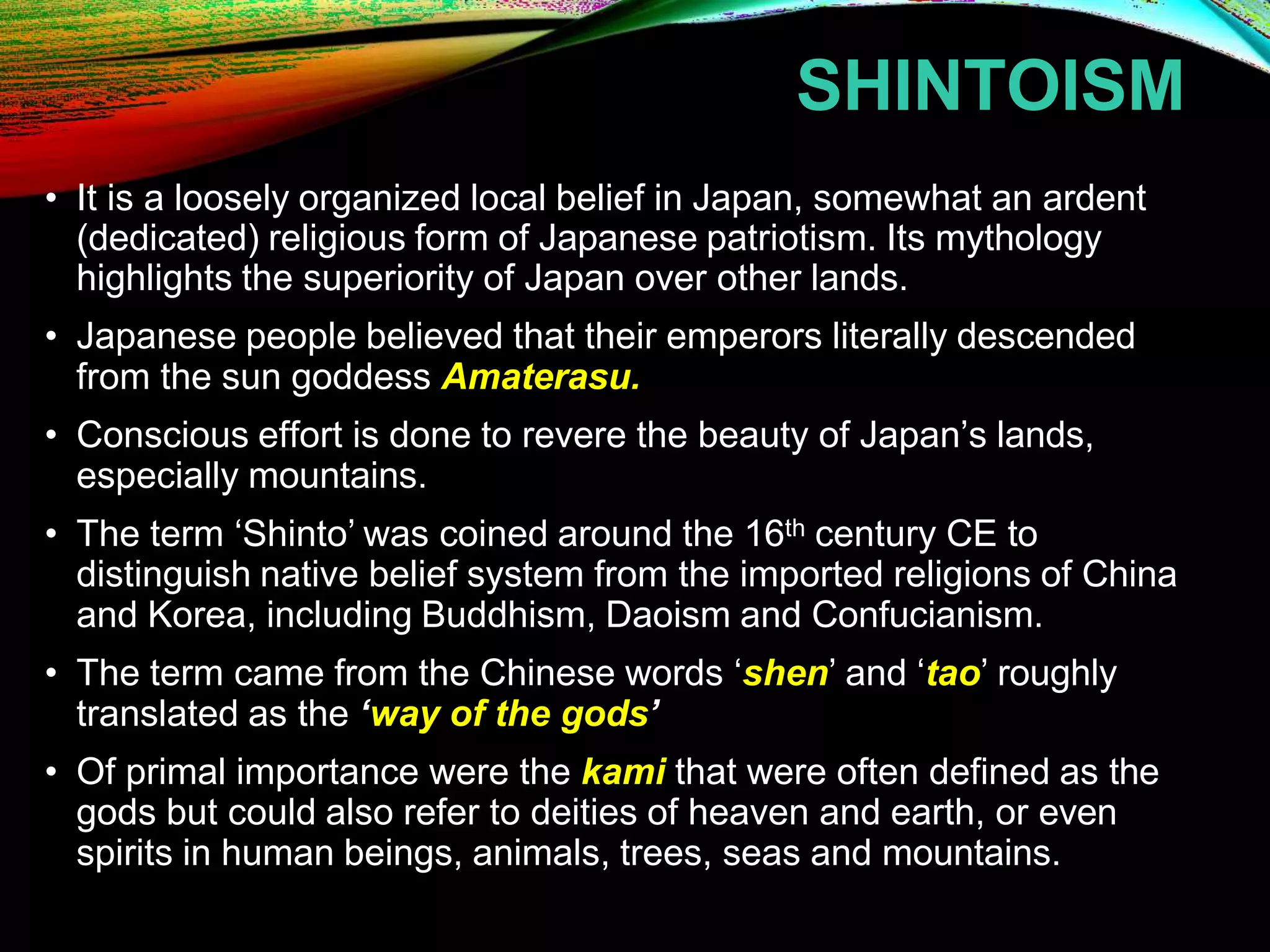The document discusses the origins and development of major world religions. It begins by explaining how prehistoric humans practiced early forms of religion and how geography and culture influenced the establishment of religions. It then provides a timeline of important dates in the origins of religions like Judaism, Christianity, Islam, Hinduism, Buddhism, Confucianism, Daoism, and Shintoism. It also summarizes the commonalities between the Abrahamic religions of Judaism, Christianity, and Islam which have over half the world's population. The document concludes by examining the geographical contexts of religions in the Western Frontier (West Asia), the Indian Subcontinent, and Eastern End (East Asia).



































